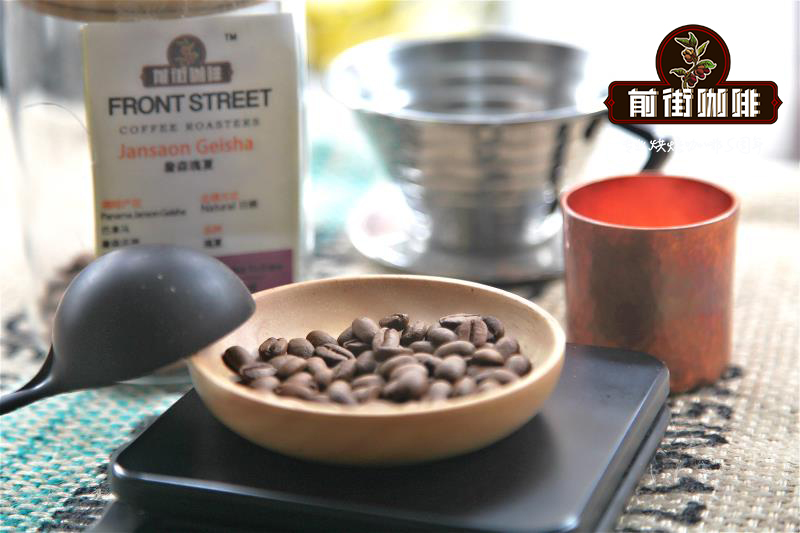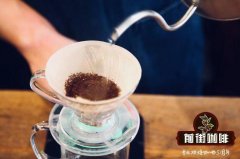Understand the basic characteristics of Arabica coffee | what are the characteristics of high-quality Arabica coffee beans

Professional coffee knowledge exchange more coffee bean information please follow the coffee workshop (Wechat official account cafe_style)
Also known as small coffee beans, originated in Ethiopia. Arabica coffee trees mostly grow at an altitude of 1000 ℃ 2000 meters above sea level; they are hardy, and the suitable growth temperature is 15 mures and 24 meters; they need more humidity, and the annual rainfall is not less than 1500 milliliters; at the same time, they also have higher requirements for cultivation techniques. Arabica coffee tree is a large shrub with oval, dark green leaves and oval fruit. Generally, there are two slightly flattened beans with long oval on the front, narrow and curved cracks in the middle, S-shaped, and smooth arc on the back of the beans. Caffeine content is about 0.8% Rue 1.5%.
Arabica coffee trees are suitable for planting in mountain environments with elevations of 600-2200 meters, temperatures of 15 °- 24 °C and annual rainfall of 1200-2200 mm. And Robusta coffee trees, do not require high altitude, can be planted between 0-800m, but also suitable for higher temperatures (18 °- 36 °C), and 2200-3000 mm / year rainfall. In terms of yield, Arabica produces less coffee per hectare than Robusta, which makes Arabica much more expensive to grow.
Arabica coffee beans are slightly larger than Luodou, and most of them are in the shape of long strips (such as tin card). The centerline of Arabica coffee beans is curved, while Luodou is relatively oval and straight (which makes it more intuitive to tell the two). There are also structural differences between coffee beans, which may explain why the two coffee beans are roasted differently under the same conditions.
Arabica coffee's excellent flavor and aroma make it the only coffee that can be drunk directly and alone among these native species, such as the Blue Mountains of Jamaica, Mantenin of Indonesia, Yega Snow Coffee and Brazilian Coffee. However, it has weak resistance to dryness, frost, diseases and insect pests, especially leaf rust, which is the biggest natural enemy of coffee, so all producing countries are committed to improving varieties.
Arabica coffee produced in different regions, different elevations and different climates has its own characteristics and can show completely different individual flavor. It smells like grass when it is not baked, and after proper baking, it shows "fruity" (medium-shallow baking) and "caramel flavor" (deep baking). Suitable for a single origin and a variety of mixed beans, can be made using a variety of extraction techniques.
In fact, not all coffee made from Arabica beans is fine coffee. Unfortunately, many people don't know much about this, and many brands take the opportunity to use "100% Arabica coffee beans" as a gimmick to make consumers think their coffee is great.
You can hardly see the promotion of "Arabica coffee beans" when you order coffee in a "relatively professional" cafe. For example, you see words such as "Kenya", "Colombia" and "Yega Xuefei" in the front street coffee. By tasting "individual coffee", you can understand the characteristics and flavor of coffee in a certain country or region.
END
Important Notice :
前街咖啡 FrontStreet Coffee has moved to new addredd:
FrontStreet Coffee Address: 315,Donghua East Road,GuangZhou
Tel:020 38364473
- Prev

Know how to drink espresso | how to drink ice water for espresso
Professional coffee knowledge exchange more coffee bean information please follow the coffee workshop (Wechat official account cafe_style) Espresso, which is probably the most misunderstood and unpopular coffee brewing method in coffee shops. Most people probably think that only severe coffee addicts who pursue excitement or professional coffee tasting masters will choose to drink Espresso. But in 1901, Luigi
- Next

Do you know the characteristics of growing coffee in Arabica? what conditions do you need to grow Arabica?
Professional coffee knowledge exchange more coffee bean information Please pay attention to coffee workshop (Wechat official account cafe_style) Coffee comes from the Greek word Kaweh, which means strength and enthusiasm. Coffee tree belongs to the evergreen shrub of Rubiaceae. There are about 40 species of coffee plants, but only Arabica and Robusta are the commercial coffee beans that can be used for human drinking or food industry.
Related
- Beginners will see the "Coffee pull flower" guide!
- What is the difference between ice blog purified milk and ordinary milk coffee?
- Why is the Philippines the largest producer of crops in Liberia?
- For coffee extraction, should the fine powder be retained?
- How does extracted espresso fill pressed powder? How much strength does it take to press the powder?
- How to make jasmine cold extract coffee? Is the jasmine + latte good?
- Will this little toy really make the coffee taste better? How does Lily Drip affect coffee extraction?
- Will the action of slapping the filter cup also affect coffee extraction?
- What's the difference between powder-to-water ratio and powder-to-liquid ratio?
- What is the Ethiopian local species? What does it have to do with Heirloom native species?

